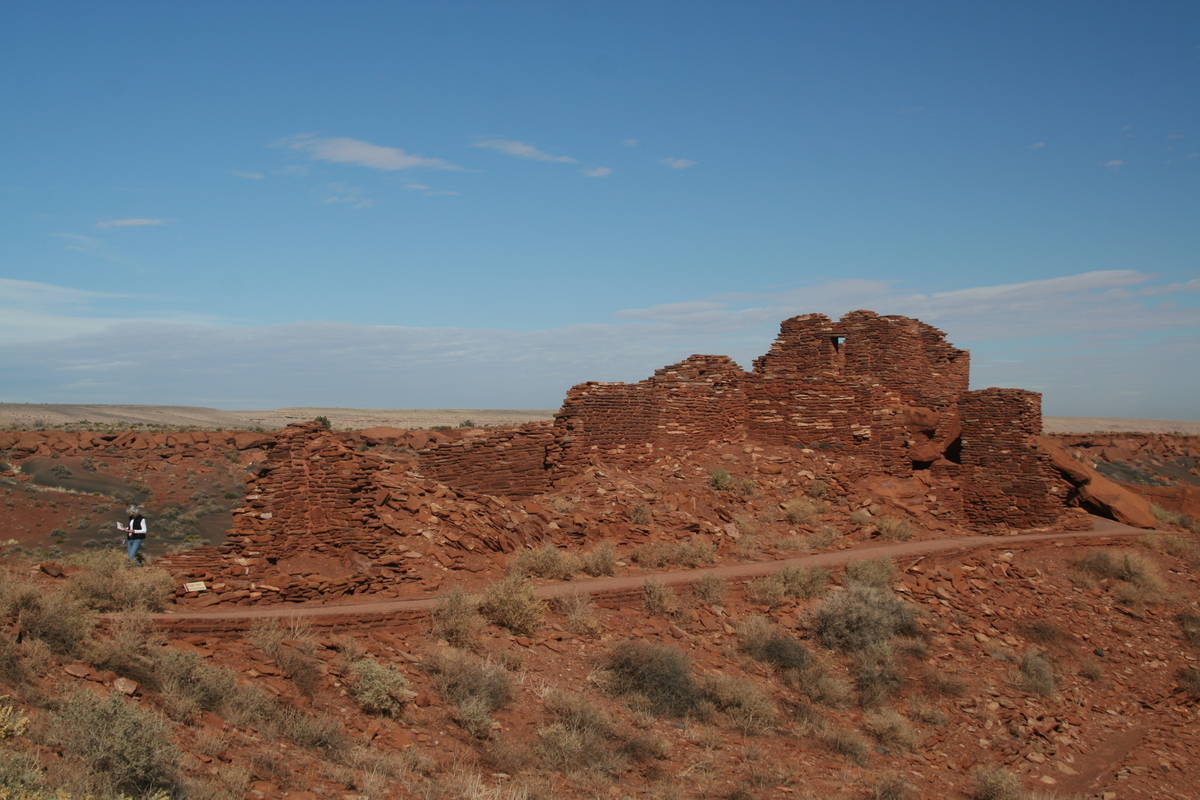Ancient life on display at Arizona national monument

Wupatki National Monument in Arizona boasts a whopping 2,500 documented archaeological sites over its 35,000 acres.
While you won’t be able to explore them all or even be allowed to, it’s worth a trip to see the highlights. The park is about 45 minutes northeast of Flagstaff. Late summer and early fall are good times to go — park elevation is about 4,700 feet, and forecasts call for average daily highs in the 80s through most of September.
The monument’s most-visited site is Wupatki Pueblo, one of the finest ancient areas in the region. This village is associated with the Cohonina, Sinagua and the Kayenta peoples, all thought to be ancestors of today’s Pueblo. A self-guided tour, over a half-mile loop, covers the pueblo and the surrounding grounds.
This pueblo was built on an outcropping of red sandstone. It is thought to have started out small, perhaps as early as A.D. 500. After a volcanic eruption of what now is called Sunset Crater about 21 miles away, the settlement grew. This was due to the ash falling on the area, helping keep moisture in the soil, making it better for growing crops.
People cultivated about half their diet in crops such as corn, beans and squash; they also gathered wild plants and hunted wildlife including pronghorn, deer and small game.
Toward the end of the 12th century, thousands farmed the region and many moved into Wupatki Pueblo. At one time, the pueblo grew into a regional center for trade, ceremony and crafts. It was occupied by hundreds and grew to three stories high with more than 100 rooms. The pueblo was at its largest from about the 1180s to 1225.
By 1250, the inhabitants moved on. Experts can only theorize why the pueblo was abandoned around this time. Was it because of drought, disease or social problems, or maybe a combination of those things?
The ruins were designated a national monument in 1924, and the place was partially excavated and much of it stabilized.
Walking down the hill past the pueblo, you will find two round structures, the ceremonial ball court and a community room. While other ball courts have been found in Arizona, this one is unique because it is made of stone masonry. The court is 102 feet long and 78 feet wide, with 6-foot-high walls and an opening on each end.
Nearby is a blowhole. This was formed from a natural fracture in the earth. When the air outside heats up, there is a strong blast out of the ground, with enough force that if you have long hair it will fly straight up in the air. The park has a safety grid over the hole.
There are other archaeological sites worth seeing in the park, including nearby Wukoki Pueblo. It’s one of the best preserved and is thought to have been occupied from 1120 to 1210.
The closest campground is Bonito (fs.usda.gov/coconino), about 20 miles away and at an elevation of 6,900 feet. Nearby Flagstaff (flagstaffarizona.org) has full visitor services.
All trails and bathrooms are open at this time, but because of COVID-19, the Wupatki visitor center remains closed. Be sure to bring food, plenty of water and hats, as the area offers little shade.
Wupatki National Monument is on Mountain Standard Time year-round, although the bordering Navajo Reservation operates under daylight saving time. Currently, the park is open from sunrise to sunset year-round except New Year’s and Christmas.
For more information on Wupatki, visit nps.gov/wupa or call 928-679-2365.